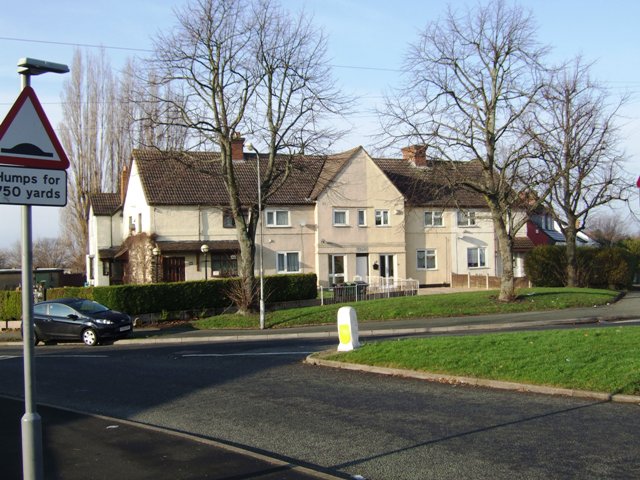SJ9200 : Council Housing - Park Lane
taken 11 years ago, near to Bushbury, Wolverhampton, England

A programme of council house building started after the Great War following on from the Lloyd George’s government’s Housing Act of 1919. The 'Addison Act' brought in susidies for council house building and aimed to provide 500,000 'homes for heroes' within a three year period although less than half of this target was met.
There was a shortage of housing land available within the borough and the first houses were built in 1919-20. The sites were at Green Lane (Birmingham Road), Birches Barn, Oxley and Parkfield Road (Thompson Avenue).
The Green Lane site was in All Saints on the edge of the town centre. Birches Barn in the south west of town was farmland on the town boundary with Tettenhall. Oxley Golf Course was purchased north of the town. The Parkfield Road Estate was built on a brownfield site formerly part of a colliery south of the town on the boundary with Bilston.
The first tenants moved into their properties in November 1919.
The housing built comprised three bedroom dwellings with parlour and scullery: larger properties also include a living room. The standards are based on the Tudor Walters Report of 1919 and the Design Manual.
By 1923 around 550 houses had been built on these estates. Further land was obtained on the Old Heath Colliery to the east of the town (Eastfield). The first houses on the site were completed in 1924.
In 1923 the 'Chamberlain Act' withdrew subsidies for council houses except for private builders and houses for sale. The council undertook to build houses and offer these for sale and also sold off some of their existing properties.
Further sites started including Gorsebrook Road, Sweetman Street and the Newbridge Estate west of the town. The developments reflected availability of small parcels of land. The houses built now included smaller two bedroom dwellings at Gorsebrook Road.
The 'Wheatley Act' of 1924 passed by the new Labour Government introduced higher subsidies for council housing and also allowed for a contribution to be made from the rates.
In 1924 the council bought the Showell Estate and the larger Low Hill and Bushbury Estates from the Low Hill-Bushbury Estate Company. These provided the land for the huge developments of 1925-1929 and completed the initial phase of building. By 1927 over 2000 dwellings had been built on the Bushbury-Low Hill estates making this one of the largest council estates in the country. Although there are a variety of external styles the dwelling type is almost entirely three bedroom properties with parlour and scullery.
